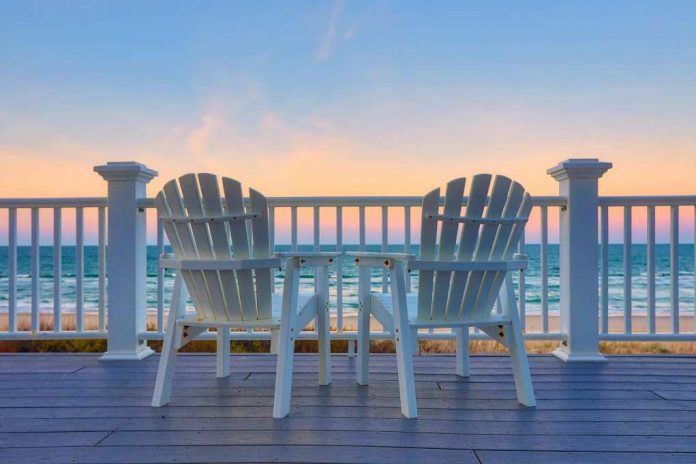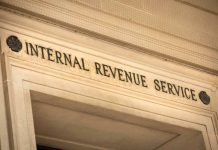
Refinancing can be a great way to save money, get cash out of your home, improve your financial stability, and more. Generally when people think of a refinance, they think about their primary residence. However, what about your vacation home/second home?
What Counts as a Vacation Home?
When you think of home, you probably think of your primary residence. This home is different from a vacation home because this is a secondary residence. A second home like a vacation home is meant for vacations, holiday, recreational purposes, etc. Oftentimes, these residences are located in areas where people commonly vacation but can be anywhere.
What’s the Difference Between a Vacation Home and an Investment Property?
While a vacation home acts as a second home, an investment property is a little different. An investment property, also referred to as a rental property, is a property that an individual owns but is occupied by another tenant. A vacation home is a second home whose owners occupy it for a part of the year and is not the primary residence. Oftentimes people confuse an investment property with a vacation home/second home. Luckily, the difference doesn’t matter too much when it comes to the refinance process.
What is a Mortgage Refinance?
A mortgage refinance is a term that people use to describe the process of replacing their existing loan with a new one for a home. In a mortgage refi, the new loan is able to replace the old one because it pays the existing one off. This process can take 30-45 days and can feel complicated. While the process can seem complex, it can easily be broken into five easy steps:
- Prepare for the Refinance
- Begin the Application Process
- Confirm Your Interest Rate
- Go Through the Underwriting Process
- Close on Your Loan
Prepare for the Refinance
A key part of a mortgage refinance is proper preparation. Before you submit an application you will want to review your credit score and compare lenders. Reviewing your credit score is a key part of getting ready for refinance. Your credit score can influence the interest rate you’ll get, as well as determine whether or not you can even get a refinance. Some lenders have guidelines that define the minimum credit score requirement. You can review your credit report online for free with no impact on your score. The best part? If you find any errors on your credit report, then you can dispute them and have them dropped. When errors are dropped then you can see the negative impact lifted from your credit score. The better the credit score then the better the interest rate.
Another important part of preparation is comparing lenders. Not every lender will be the same. They are unique to their requirements and mortgage refinance options. You can review top refinance lenders online for free.
Begin the Application Process
The lenders of your refinance will need to see your personal documentation like financial verification documents, employment verification documents, and more. Even though each lender has their own documentation requirements, you can expect to provide:
- Pay Stubs
- Tax Documents
- Bank Statements
If you are applying with another person like a spouse then they will need to provide documentation as well.
Confirm Your Interest Rate
If your application is approved by the lender then you may be able to confirm your interest rate for your loan. This prevents the loan from changing before closing. The rate lock period varies by lender but is usually between 15 to 60 days.
Go Through the Underwriting Process
The underwriting process begins as soon as you submit your application. A lender will want to go through this process in order to verify your financial information and details about the property. In order to verify the property, the borrower will likely need to get an appraisal.
A professional appraiser will conduct the appraisal to confirm the market value of your home. To best prepare for this process, you want to make sure your home is in tip top shape. Cleaning the interior and exterior of your home can highlight the property and potentially increase the overall market value amount!
Close on Your Loan
Once the underwriting process is complete, you can close on your loan! A few days before closing, you will receive a closing disclosure that details everything about the loan. Refinance closings are usually quicker than a home purchase but still can take some time. If you have any questions, make sure to ask your lender. At closing you will be responsible for an average of $5,779.
Different Types of Mortgage Refinances
There are a variety of different refinances available whether you want to refinance your primary residence or your vacation home/second home. Popular refinance options include:
- Rate-and-Term Refinance
- Cash-Out Refinance
- Cash-In Refinance
- Streamline Refinance
- No-Closing-Cost Refinance
Rate-and-Term Refinance
This is what most people think of when they think about a mortgage refinance. With this type of refinance, a person can update their interest rate and loan terms. In a refinance, the new loan pays off the existing loan so that the only thing remaining is the new loan with the updated terms.
Cash-Out Refinance
When homeowners want to tap into their home equity then a cash-out refinance is a great option. The new loan amount is based on the existing loan as well as the amount of available equity in the property. Lenders have their own restrictions so you may not be able to access all available equity depending on who you get your loan from.
Cash-In Refinance
This refinance is the opposite of a cash-out refinance. Instead of taking cash out, homeowners can provide more money during closing to go towards the lender. This will reduce the overall amount due and can improve your loan-to-value (LTV) ratio.
Streamline Refinance
For subprime homeowners that have an existing Federal Housing Administration (FHA) insured loan can consider a streamline refinance. These refinances have more relaxed eligibility qualifications like no credit check, no appraisal, and more.
No-Closing-Cost Refinance
Closing costs are a part of the refinance process. There’s no way to get around it. However, some lenders will advertise no-closing-cost refinances. While this may seem like a promising offer, it can be a little misleading. Every lender is different, but in most setups the lender will roll the closing costs into the total loan amount. This means you still have closing costs but they are not all due at closing.
Refinancing Your Vacation Home/Second Home: What You Should Know
When it comes time to refinancing your vacation home or second home, you want to make sure you have some context. While these homes can still be lived in, they are not the primary residence. However, that doesn’t matter!
Can You Refinance a House You Don’t Live In?
Yes! There are no rules that state a person who isn’t living in their home can’t refinance. However, it is important to keep in mind whether or not the refinance would be beneficial. Refinances are expensive so if you don’t see enough value in the refinance then you shouldn’t try to force one.
Can You Refinance Your Home From Another State?
Luckily, you are able to refinance your home from another state! However, there are some obstacles that can come with refinancing an out of state second home. Factors to keep in mind include:
- LTV Requirements
- Lender Licenses
LTV Requirements
Every lender has different requirements when it comes to the LTV that a borrower must have. For example, while some lenders set a maximum LTV of 95% for a primary residence, that may be 90% for a second home. This may not be the case for your lender but it is an aspect to keep in mind when inquiring about refinance opportunities!
Lender Licenses
If you are banking with a lender that is located in state A but your property is in state B, then you will need to make sure your current lender is licensed in the state that your property is in. You can review licensing online at the National Mortgage Licensing System. If you find that your lender is unable to refinance a property in the state that you need, then keep looking!
Can I Refinance My House to Buy a Vacation Home/Second Home?
As mentioned above, there are many different types of refinances. One important refinance option is a cash-out refinance. These are important because they are able to provide homeowners the chance to tap into their home equity when they refinance. If you want to choose a cash-out refinance for your primary residence, then you can use the funds that you get towards the cost of a vacation home. Oftentimes, people do this when they need money for a down payment!
Are Interest Rates Higher for Vacation Homes/Second Homes?
Potentially! There are so many factors that influence your interest rate. Comparatively to a loan for a primary residence, a second home like a vacation home will usually have a higher interest rate (but not by a lot!). Another aspect that you should consider is the fact that you may need a better credit score as well.
Benefits of Refinancing a Vacation Home
The refinance process of a second home (like a vacation home) can have both benefits and drawbacks! It is important to understand both sides of the coin so you can make an educated decision. Some advantages may include:
- Reap the Benefits of a Better Interest Rate
- Get Cash Out of Your Second Home
- Increase Your Equity
Reap the Benefits of a Better Interest Rate
When you get a better interest rate you can see a lot of benefits. You save more money over the course of the loan, and can even improve your monthly payment. When you have more financial freedom you can use extra money towards other financial goals like reducing debt or saving for an emergency cushion.
Get Cash Out of Your Second Home
If you choose a specific type of refinance then you may be able to access your home equity. When you tap into your home equity you can get a lump sum of funds that can be used for a variety of things like home improvements, debt consolidation, and more. This can improve your financial situation and potentially increase your credit score!
Increase Your Equity
If you choose a different type of refinance like a cash-in refinance then you can improve your overall amount of equity. As you improve your equity, you provide a bigger emergency cushion in times of need, if you need to access that equity for emergency funds.
Drawbacks of Refinancing a Vacation Home
Even though there are some nice benefits that come with refinancing a second home, there are some drawbacks that you should be aware of. It isn’t all butterflies and rainbows when it comes to a refinance! Some disadvantages can include:
- Higher Monthly Mortgage Payments
- Strict Eligibility Guidelines
- Expensive Closing Costs
Higher Monthly Mortgage Payments
Just as you could see a lower monthly mortgage payment, you could also see a higher one. If you have a higher monthly payment then it can be difficult to budget and prepare for unexpected emergencies.
Strict Eligibility Guidelines
While there are some guidelines that are relaxed for subprime borrowers that have an FHA-insured mortgage, most refinances will have eligibility criteria. This criteria varies by lender but can be difficult to qualify for.
Expensive Closing Costs
Refinances aren’t cheap. As discussed earlier, there are closing costs that are a part of the refinancing process. These closing costs can be so expensive that it doesn’t make sense to refinance. Make sure to review your break even point when deciding if a refinance is right for you.
What is a Break Even Point?
The break-even point is a very important component of the refinance process because it shows the homeowner how long it would take to recover from the closing costs. For example if you save $100 every month on your monthly payment, and the closing costs were $5,000 then it would take 50 months (or a little over 4 years) to recover from the closing costs.
Overall
Refinancing a second home like a vacation home can feel like a daunting task. Luckily, it doesn’t have to be! When researching this topic you may come across articles about refinancing an investment property. Make sure that you understand the type of property you are looking to refinance whether a primary residence, second home, investment property, etc. The mortgage refinance process can be broken down into a few easy steps. The only special aspects that you should keep in mind are LTV requirements and lender licenses. That is why it is important to take your time, ask your lender questions, and make sure you have a good idea of your financial standing before beginning the process.
Article References
https://www.businessinsider.com/personal-finance/average-refinance-closing-costs
http://www.nmlsconsumeraccess.org/
https://www.nerdwallet.com/mortgages/mortgage-rates/second-home
















